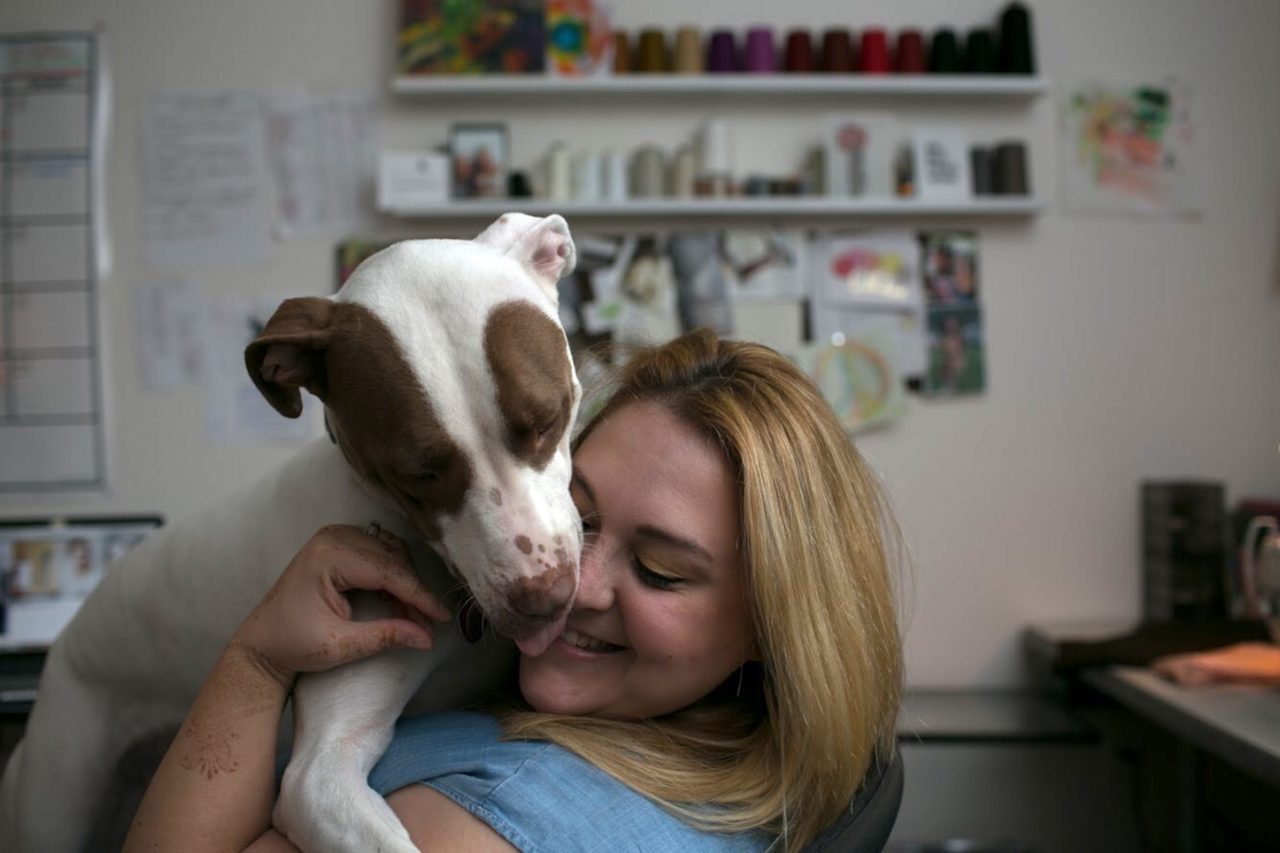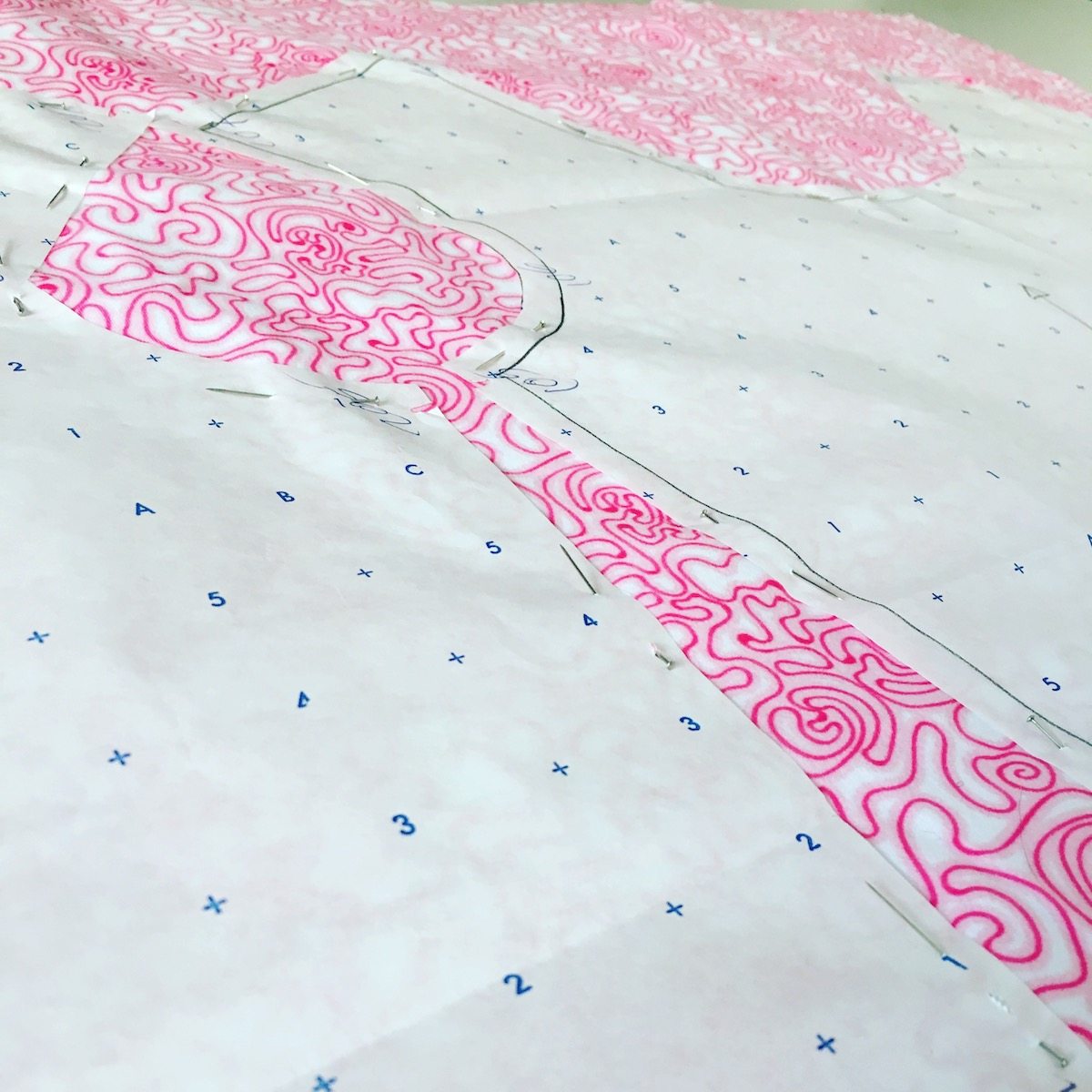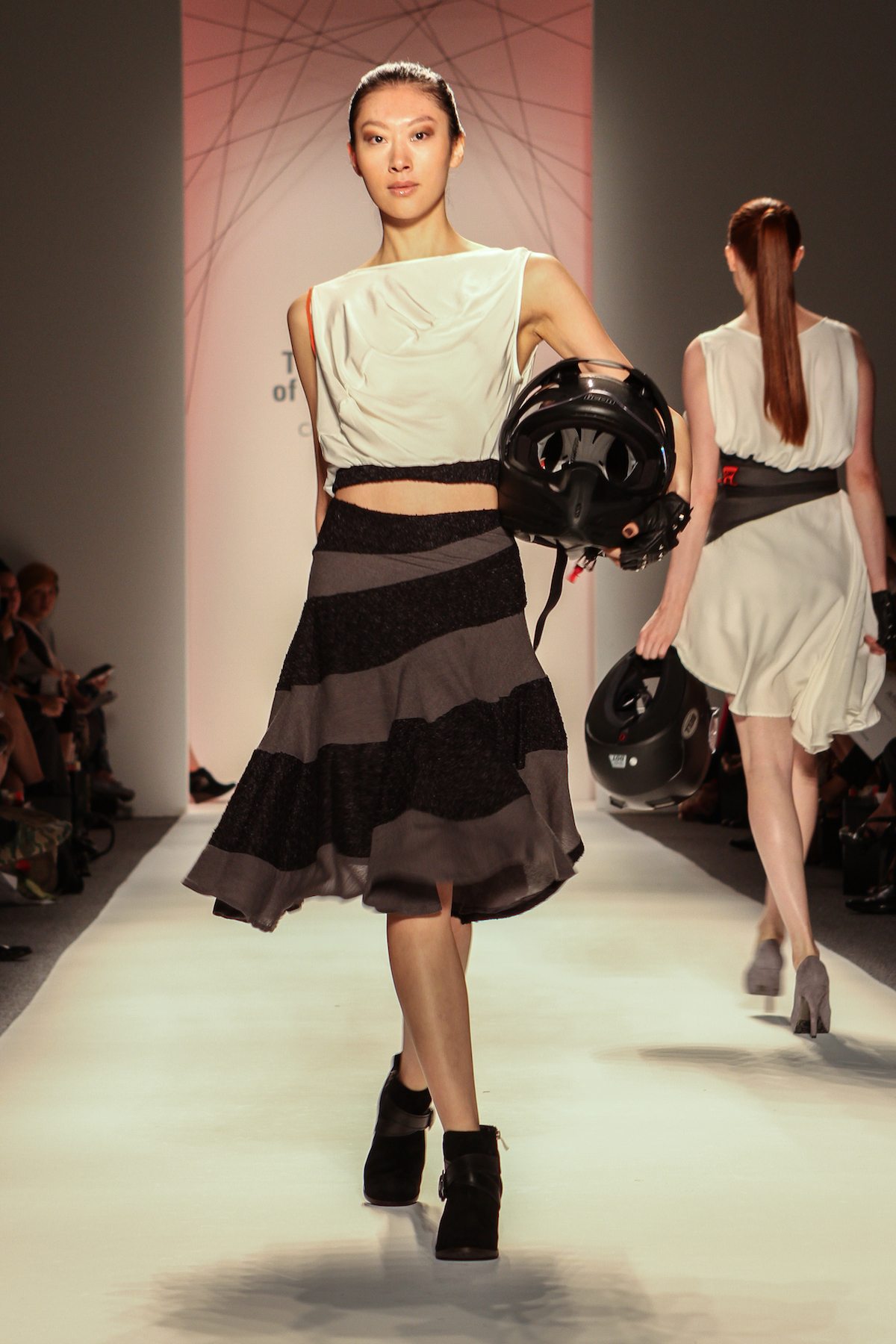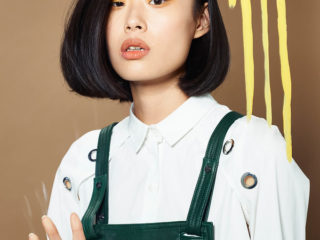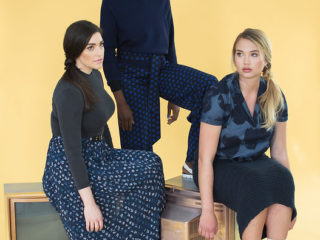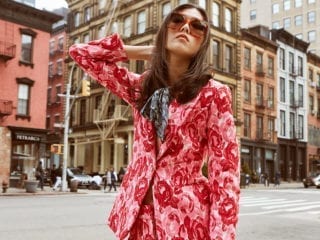Body positive womenswear designer Gita Omri is an artist. Growing up as a painter by hobby, she often looked to Leonardo da Vinci and the “flawless brush strokes” of other notable painters of his time as the ideal genre of art.
But recently, she has found a beauty in abstract painting, where the lines are not as precise, less calculated. As Omri described it, the art is more about “letting a piece of yourself shine through with whatever you are projecting on the canvas.”
This is evident in another medium of Omri’s: fashion, where bodies become the canvases and not one canvas is the same. Raised in a conservative Israeli town alongside three sisters, conversation often sparked body comparison, so Omri has decided to combat self worth associated with size head on.
To celebrate the culture and size eclecticism of women in the world, Omri’s collections, Omri Essentials and Gita Omri feature removable size tags, “two-size sampling” and modest alternatives to her sleeveless garments.
We chatted with the now New York-based designer about what inclusive sizing means for her collections and how her multi-cultural experiences have impacted her fashion philosophy.
Kristin Vartan: What made you want to go into the fashion industry?
Gita Omri: If you ask my mom, she’ll tell you that I was always interested in clothes, but I don’t remember that. I grew up as a painter. I’ve painted since I was very young, but I didn’t think I wanted to go down that path as a career move. I enjoyed it as a hobby and didn’t want to ruin it by making it work. I thought I’d explore other things.
I was in the Israeli Air Force for two years. My second year, when I was starting to train my replacement, my evenings opened up, so I decided to take some classes. At first I thought I would be interested in event planning, so I signed up for a course in a creative college [Concept Academy] in Tel Aviv.
The woman who sold me her course was really good at her job and convinced me to also do a styling course. I ended up loving the styling course and hating the event planning. It gave me a creative outlook, but it was also challenging for me. It’s interesting because [fashion] is art that has to be functional. In that way, it’s challenging.
My original plan was to stay in Israel. I applied to school there, but did not make it far in my application process. I didn’t really have any sewing skills. I didn’t know what fashion design was about. I just sketched some stuff and thought, yeah, I can do this!
KV: Tell us more about your upbringing in Israel and your introduction to fashion during that time.
GO: It definitely affected how I felt about my body, and myself. I have three sisters who are younger than me, but they are all very skinny and very beautiful and really fun. I always kind of felt less than them, mainly because they were skinny and I was not. When someone has something you want, it’s easy to assume, “Oh their life is so perfect, their life is so great,” and you completely dismiss what they might be going through.
That’s kind of what it was like growing up: feeling like, “They’re so perfect, they’re so wonderful, they’re so skinny, they can buy any clothes they want.” And I thought I was less than because of that.
Now there are bigger sizes for all age groups, but when I was growing up there was nothing. It sucks for a kid to have to shop for grown-up clothes at grown-up stores that are less than trendy. I started to rely very heavily on accessories and collecting earrings. I still have a tremendous amount of accessories.
Use clothing as a tool to bring out your true self.
KV: Why did you rely on accessories as opposed to other pieces of clothing?
GO: Jewelry never made you feel fat. Shopping can be a very traumatic experience for all kinds of women, and all kinds of sizes and scenarios. One thing that I’m trying to change with my brand is how much importance women [have] put on size tags and how they really equate that with their self-worth.
That’s something that I struggled with for years, for years, and still sometimes struggle with because that’s what we’ve been conditioned to feel, like the bigger the number of our garments, the less we’re worth.
KV: With a mantra of “inclusive sizing,” what does inclusivity look like in the fashion world?
GO: Not only was there not inclusive sizing, there wasn’t plus sizing when I was growing up. Now there is a lot more plus size, and still not much inclusive sizing. The difference to me is when a brand or collection offers the same style in a wide size range. It’s not just having a plus size line, it’s having a line that designs in a way that can be as universally available and as flattering as possible.
How I aim for that inclusiveness in my brand is, the same collection is offered in a wide range, I don’t want to say a full size range because that’s not possible, but a wider size range than other brands. I carry sizes 6-26.
I really try to maintain the integrity of the designs throughout all the sizes. One of the ways I do that is by having two-size samplings. Whatever I’m developing, I develop simultaneously in a size six and a size 20, that way I can make sure the lines are the same and the fit is similar.
There are brands that do very wide size ranges, but what they’ll do is make small sizes and just keep grading up the pattern; once it gets to the bigger sizes, the fit is all wrong. It doesn’t really complement the body because there are parts of the body that don’t keep growing. Your shoulder isn’t going to keep growing, your height doesn’t keep growing. It’s more of a roundness that you have to deal with.
Whatever I’m developing, I develop simultaneously in a size six and a size 20, that way I can make sure the lines are the same and the fit is similar.
Another way that I’m being inclusive is that certain styles that I really like, I’m offering in both short sleeve versions and a long sleeve version because there are women who like to cover more, whether they’re religious or they just don’t like their arms. I really want to have a variety of options.
KV: When you were a student at the Art Institute in New York, you were chosen to premiere your designs at Mercedes-Benz Fashion Week (NYFW)! Tell us what that was like.
GO: That was one of the most exciting experiences in my entire life! The Art Institute is where I got my first degree. I got my associates degree there. It’s the kind of school where you get out of it what you put in.
When I moved here [New York] and started going there, day one I decided, ‘I’m going to go in here and I’m going to just see how far I can go.’ I ended up being at the top of my class, and in the senior [fashion] show, which is put on by Mercedes Benz. I was very fortunate because I got the award for the most marketable collection and the honor of opening the show.
That collection was extremely personal. I had just met the guy who is now my husband while I was about to start developing my senior collection and the collection ended up being completely inspired by him. He races motocross, which is why the collection has all the helmets and the gloves. And it was pretty well received, which was exciting for me.
KV: How did your time studying at Central Saint Martin shape your fashion philosophy?
GO: It helped me learn that I was really interested in the print design part of the whole design process, designing my own prints for the collection. And it really taught me that I needed to focus what I was about as a designer, what my brand was going to be about.
KV: Growing up in Israel, going to school in London and now living in New York, how have you seen a difference in ideals of fashion and beauty culturally?
GO: I grew up in a small, religious town. So if you put any effort into what you were wearing, you got bombarded with questions. I was into dressing up more and everything, but it wasn’t very “think fashion forward” in my town, or in Israel in general.
There is a stronger fashion community in Tel Aviv and in central Israel, which has definitely been growing over the last few years. They have their own fashion week and there is somewhat of a fashion culture there, but definitely not like in New York or London. My experience of fashion in London is much more centered on street wear and being the cool, trendy kind of vibe. I don’t think I am or ever was cool enough for London.
One day I got into the elevator at St. Martins to go upstairs for class and this woman came into the elevator, a student, and she was wearing a Victorian gown with army boots and a shaved head! And that was her outfit for the day. She wasn’t being ironic or in a costume. I mean, [London] was where punk was developed. So there’s that draw to the street culture and really avant garde way of dressing.
I never felt like I was sticking out more like a sore thumb than when I went to school in just jeans and a band T-shirt. At Central St. Martins, the crazier and more innovative, the better.
In New York, there’s a lot more desire for practicality and comfort, which I’m drawn to, but there’s still room for innovative styles or interesting prints and designs. For me, New York has a really great balance between the art and the practicality. My collection fits in here way better than in England.
KV: What’s one message you have for women who struggle with body positivity and finding their place in fashion?
GO: First, no one feels body positive 100 percent of the time, so if you don’t feel it today, that’s cool. And when it comes to fashion, I think the most important message is: Don’t feel pressured to fit into a certain trend or style. Use clothing as a tool to bring out your true self.
When you feel comfortable in what you’re wearing, you will be more likely to let your true self be seen and I think that’s important — to not try to be the fashion, but to let the fashion be yourself.
Featured image via Andrej Lišakov
SaveSave

